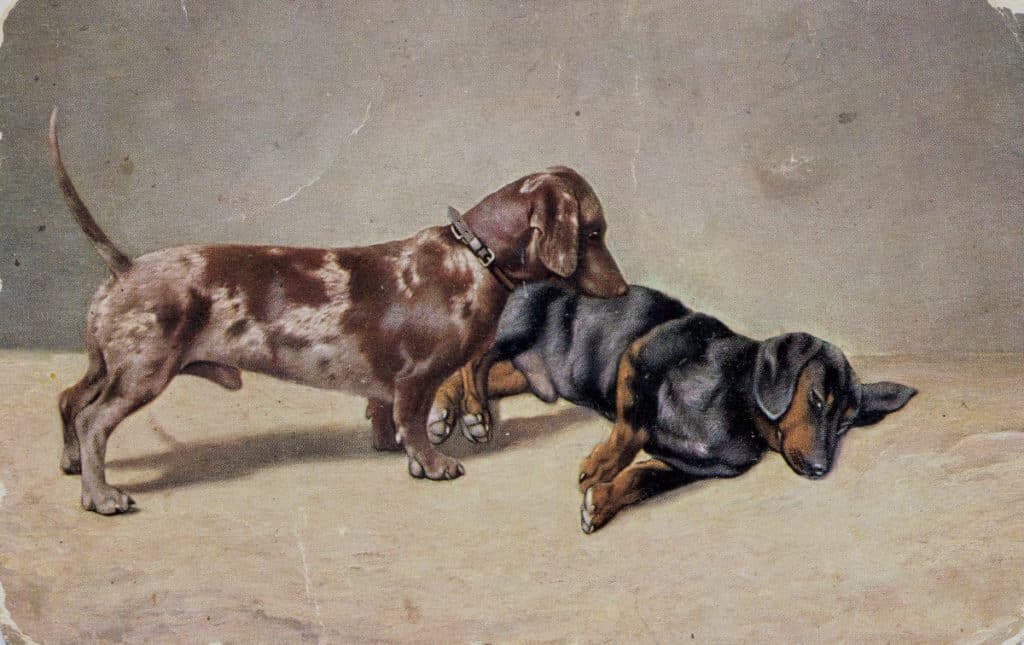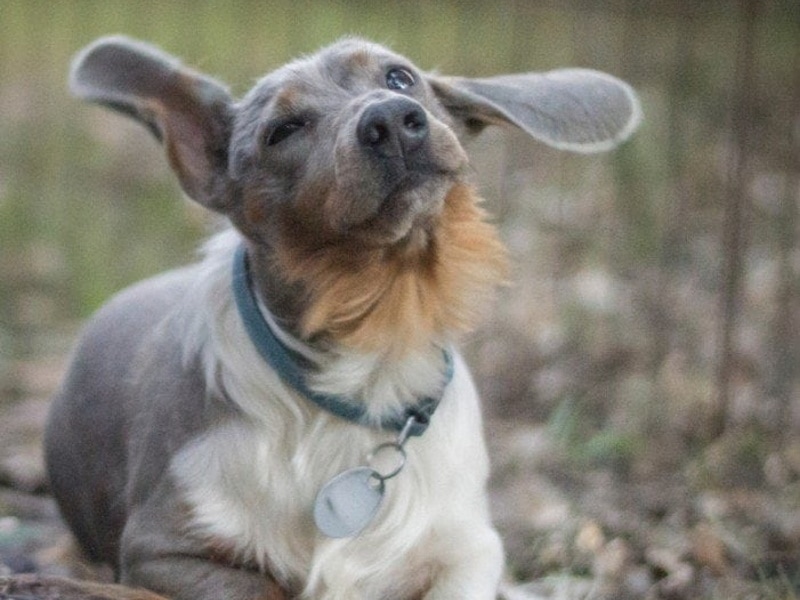The Dachshund, with its long body and short legs, is a beloved breed among dog lovers. But among dachshund enthusiasts, the blue dachshund stands out with its unique coat color and pattern. This captivating breed has a rich history and a charming personality that continues to capture the hearts of many. In this article, we will delve into the world of the blue dachshund, exploring its origins, genetics, care needs, and more.
Contents
- 1 Blue Dachshund Coat Colors and Patterns: A Comprehensive Guide
- 2 Caring for a Blue Dachshund: Diet, Exercise, and Grooming Tips
- 3 The Blue Dachshund Personality: Playful, Loyal, and Independent
- 4 Finding a Blue Dachshund: Reputable Breeders and Adoption Resources
- 5 Blue Dachshunds in History and Culture: From Working Dogs to Family Companions
- 6 Conclusion
Blue Dachshund Coat Colors and Patterns: A Comprehensive Guide

Dachshunds come in various coat colors and patterns, including black, tan, red, and of course, blue. The blue dachshund‘s coat ranges from a dark grey to a silvery-blue hue, making it stand out from other dachshund varieties. This color variation is a result of the dapple gene, a recessive gene that produces a striking pattern of light and dark patches on the dog’s coat.
Understanding the Dapple Gene
The dapple gene is responsible for the blue dachshund‘s unique coat color and pattern. It is a dominant gene, meaning that even if only one parent carries the gene, there is a high chance of producing dapple offspring. However, breeding two dapple dachshunds together can lead to potential health issues, which we will discuss later in this article.
Other Coat Colors and Patterns in Blue Dachshunds
Apart from the blue dapple, there are other coat colors and patterns that can occur in blue dachshunds. These include:
- Black and Tan Dapple: This pattern features black and tan patches on a blue base coat.
- Red Dapple: The red dapple pattern displays red and lighter shades of red patches against a blue background.
- Isabella Dapple: This coat color is a result of the dilution gene, which turns the blue base coat into a light, creamy fawn color.
It’s essential to note that not all blue dachshunds are dappled. Some may have solid blue coats, while others may have a mix of blue and another color, such as black or tan.
Caring for a Blue Dachshund: Diet, Exercise, and Grooming Tips

Just like any other dog, blue dachshunds require proper care and attention to ensure their health and well-being. Here are some essential tips to keep in mind when caring for a blue dachshund:
Diet
A balanced and nutritious diet is crucial for a blue dachshund‘s overall health. As an active and energetic breed, they require high-quality food with plenty of protein to support their muscle and bone development. It’s best to consult with your veterinarian to determine the appropriate portion sizes and specific dietary needs for your dachshund based on its age, weight, and activity level.
Exercise
Despite their small size, blue dachshunds are a highly active breed that requires daily exercise. They enjoy going for walks, playing fetch, and participating in agility training. However, it’s important to take care not to over-exercise them, especially when they are still puppies, as their long bodies can be prone to injuries. A good rule of thumb is to provide your dachshund with moderate exercise for short periods throughout the day.
Grooming
Blue dachshunds have a short, smooth coat that is easy to maintain. They do shed, but regular brushing can help minimize loose hair in your home. It’s also important to keep their ears clean and dry to prevent ear infections, as their floppy ears can trap moisture. Additionally, trimming their nails regularly and brushing their teeth can help keep them in good health.
The Blue Dachshund Personality: Playful, Loyal, and Independent

Blue dachshunds have a charming personality that sets them apart from other breeds. They are intelligent, playful, and loyal to their owners. However, they can also be quite independent and may require patience and consistency when it comes to training. Here are some key traits that make blue dachshunds such beloved companions:
Intelligent and Curious
As hunting dogs, dachshunds are naturally inquisitive and have a strong sense of smell. This trait makes them excellent at tracking and following scents, but it also means they may have a tendency to chase after small animals or objects that catch their interest. It’s essential to provide them with enough mental stimulation to keep their minds occupied and prevent destructive behaviors.
Loving and Affectionate
Despite being independent, blue dachshunds are incredibly devoted to their owners and thrive on human companionship. They form strong bonds with their families and will often want to be close to their loved ones. Some blue dachshunds even enjoy cuddling and snuggling with their owners, making them the perfect lap dogs.
Determined and Courageous
Bred to hunt badgers, blue dachshunds are fearless and determined dogs. They have a strong prey drive and can be quite vocal when they spot something they want to chase. While this trait may come in handy for hunting, it’s important to train your dachshund to have good recall and avoid running off after prey or getting into potentially dangerous situations.
Finding a Blue Dachshund: Reputable Breeders and Adoption Resources

If you’re looking to add a blue dachshund to your family, it’s crucial to find a reputable breeder or adoption resource. This helps ensure that you get a healthy and well-bred puppy or adult dog. Here are some tips for finding a reputable blue dachshund breeder:
- Do your research: Look for breeders with good reviews and recommendations from other dachshund owners.
- Visit the breeder: A responsible breeder will allow potential buyers to visit their facility and meet the puppies and parents.
- Ask questions: A reputable breeder will have no problem answering any questions you may have about the breed, the puppy’s health, and the breeding process.
- Health certifications: Make sure the breeder provides health certificates for both the puppy and its parents, ensuring they have been screened for any hereditary health issues.
If you’re considering adopting a blue dachshund, there are plenty of rescue organizations and shelters that specialize in this breed. Some resources include Dachshund Rescue of North America and The National Miniature Dachshund Club’s Rescue Network.
Blue Dachshunds in History and Culture: From Working Dogs to Family Companions

The dachshund’s history can be traced back to Germany, where they were bred to hunt badgers and other small game. Their long, low-set bodies and tenacious personalities made them ideal for tracking and flushing out prey from underground burrows. Over time, dachshunds became popular among European royalty, who often kept them as pets and companions.
In the late 19th century, dachshunds made their way to the United States, where they quickly gained popularity due to their unique appearance and charming personality. Today, they are one of the most beloved breeds in America, with the blue dachshund standing out as an alluring variation of the breed.
Blue dachshunds have also made appearances in pop culture, with famous owners including Andy Warhol, Mariah Carey, and Josh Groban. In the world of literature, the children’s book “Crusoe the Celebrity Dachshund” has gained a significant following, with its titular character being a blue dachshund.
Conclusion
The blue dachshund is a captivating breed that continues to enchant dog lovers around the world. From their unique coat color and patterns to their playful yet independent personalities, these dogs have a special charm that sets them apart from other breeds. However, it’s essential to understand the genetics behind their coat color and take necessary precautions when breeding them to ensure their health and well-being. With proper care and training, a blue dachshund can make a loyal and loving companion for many years to come.
